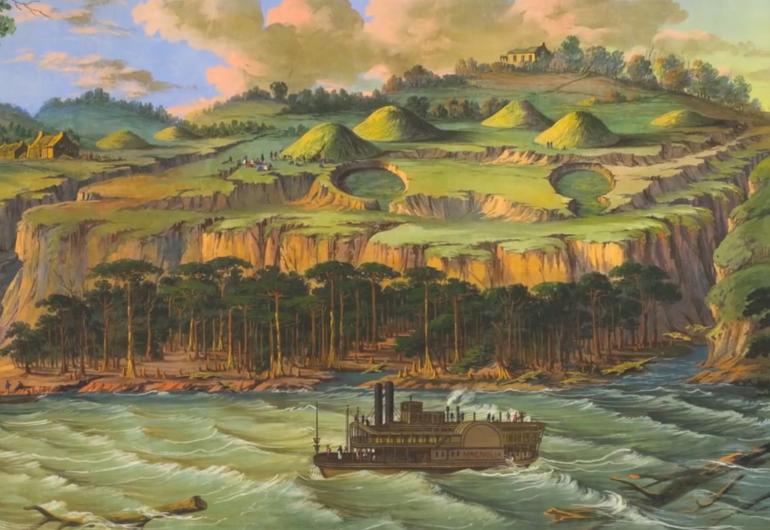Institute for Advanced Study Presents
Image as Levee: The Mississippi River before Mark Twain
Thursdays at Four
Past event
Apr 23, 2015

In the first half of the nineteenth century—decades before Mark Twain’s first publications on the topic—the Mississippi River circulated widely in the form of touring paintings, fine art and popular prints, maps, and moving panoramas. These images helped to create expectations about, and shape perceptions of, an entity that figured prominently in economic and cultural discourses of the period. The river’s ability to mobilize goods and people and its geographical breadth were aspects that commentators judged to be especially crucial in the push toward a unified national economy and identity. Yet, such dynamism and vastness challenged conventional aesthetic categories and modes of representation, leading artists and cartographers, like engineers and navigators, to contend with the river’s physical qualities. This talk explores some of the strategies that image makers used—both material and experiential—to control and convey the unruly physical nature of the Mississippi.
Nenette Luarca-Shoaf is the 2014-15 Sawyer Seminar Postdoctoral Fellow. Her research considers a wide range of visual imagery–including painting, panoramas, maps, and print culture–to understand how representation and circulation affect constructions of place and identity. She is also serving as guest curator for “Navigating the West: George Caleb Bingham and the River,” an exhibition at the Amon Carter Museum of American Art that runs through January 2015, before traveling to the St. Louis Art Museum and the Metropolitan Museum of Art. She has served as Lecturer in the Art Department at Ursinus College and has recently held the positions of Research Associate and Social Media Coordinator for the McNeil Center for Early American Studies at the University of Pennsylvania.
More information here